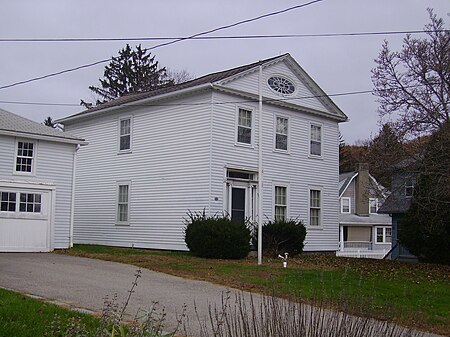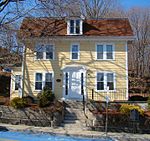Nathaniel Backus House

The Nathaniel Backus House is a two-story Greek Revival clapboarded house with a gable roof in Norwich, Connecticut. The house was built around 1750 by Nathaniel Backus and served as his home, it was later moved to its current location in 1952. The house originally began as a Colonial, but was greatly modified to Greek Revival around 1825, reconfiguring the central door to the left of the facade and adding two chimneys. The house is a historic house museum operated by the Faith Trumbull Chapter of the Daughters of the American Revolution. The Nathaniel Backus House was submitted to the National Register of Historic Places for its historical value in local history and as an example of Greek Revival domestic architecture. It was listed on the National Register of Historic Places (NRHP) in 1970 and was also included in the Chelsea Parade Historic District in 1989.
Excerpt from the Wikipedia article Nathaniel Backus House (License: CC BY-SA 3.0, Authors, Images).Nathaniel Backus House
Rockwell Terrace, Norwich
Geographical coordinates (GPS) Address Nearby Places Show on map
Geographical coordinates (GPS)
| Latitude | Longitude |
|---|---|
| N 41.534444444444 ° | E -72.078333333333 ° |
Address
Rockwell Terrace 7
06360 Norwich
Connecticut, United States
Open on Google Maps










